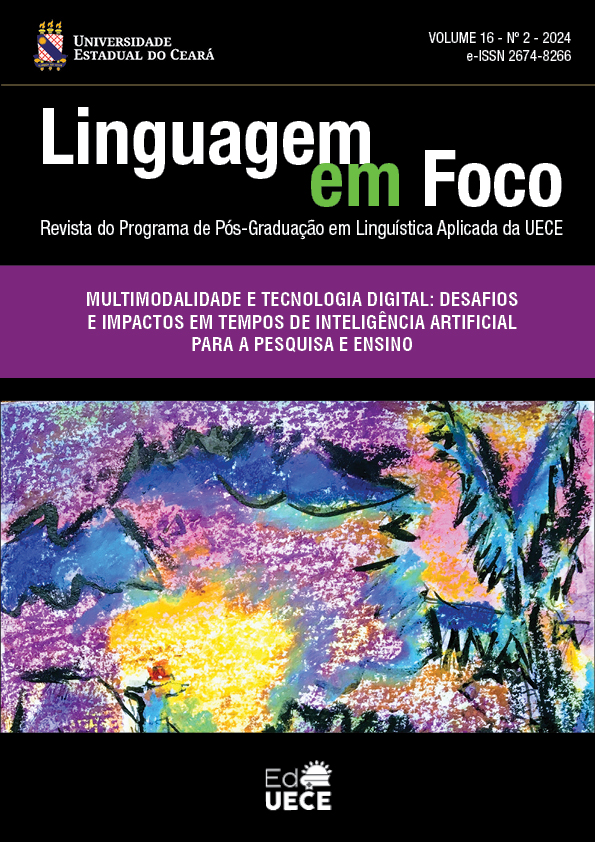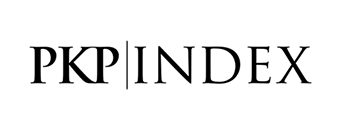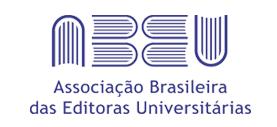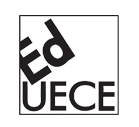Artificial intelligence and critical literacies
the technocentric discourse in memes
DOI:
https://doi.org/10.46230/lef.v16i2.13090Keywords:
artificial intelligence (ChatGPT), grammar of visual design, text genres, critical literacies, technocentrismAbstract
Dizzying advances in digital technologies connected to the internet, Artificial Intelligence (ChatGPT) present challenges and concerns that have caught the attention of various sectors of society. In this scenario, education is one of the hardest hit. Therefore, it remains committed to understanding and discussing the (dis)advantages arising from these advances. Multimodal text genres (such as memes) act in the materialization and dissemination of discourses marked by technocentric perspectives that, placing themselves on opposite sides, conceive technologies either as a panacea for all of humanity's dilemmas, or as an intensification of these dilemmas. Thus, this article aims to analyze memes about AI (ChatGPT) to understand the representations about these technological advances in the school environment and the perceptions veiled in the discourses materialized in memes. To this end, the theoretical-methodological framework that underlies the research are studies of Digital Technology and Neuroscience (Nicolelis, 2023), Grammar of Visual Design (Kress; Van Leeuwen, 2006; 2021), Text Genres (Bazerman, 2006; Marcuschi, 2008), Critical Literacies (Rojo; Moura, 2012; Kalantzis; Cope; Pinheiro, 2020) and Technocentrism (Vieira Pinto, 2005; Costa e Silva, 2013). Using a qualitative and interdisciplinary approach, the corpus, composed of memes about AI (ChatGPT), was collected from a repository of memes available on the Internet and analyzed in light of the representational meaning of Grammar of Visual Design and other aforementioned concepts. The analyzes revealed that AI (ChatGPT) can cause counterproductive behavioral changes, reinforce negative behaviors already existing in education actors and harm the development of critical thinking in relation to authorial academic production.
Downloads
References
BATES, A. W. Teaching in a digital age: guidelines for designing teaching and learning Vancouver BC: Tony Bates Associates Ltd, 2015.
BAZERMAN, C. Gêneros, agência e escrita. São Paulo: Cortez, 2006.
BENTO, M. A. S. Branqueamento e branquitude no Brasil. In: CARONE, I.; BENTO, M. A. S. (Orgs.). Psicologia Social do Racismo: estudos sobre branquitude e branqueamento no Brasil. Petrópolis: Vozes, 2003. p. 25-57.
COSTA E SILVA, G. Tecnologia, educação e tecnocentrismo: as contribuições de Álvaro Vieira Pinto. Revista brasileira de estudos pedagógicos (online), v. 94, n. 238, p. 839-857, set./dez. 2013. Disponível em: https://www.scielo.br/j/rbeped/a/8yzpyFXhFS3bHdpCRsgGRtH/. Acesso em: 19 ago. 2024.
FAIRCLOUGH, N. Discurso e mudança social. 2. ed. Brasília: Editora Universidade de Brasília, [2001] 2019.
FREITAS, L. R. Representação do Brasil e do povo brasileiro nos livros didáticos de inglês: uma análise multimodal crítica da coleção Way To Go. 2020. 173f. Dissertação (Mestrado Interdisciplinar em História e Letras) — Faculdade de Educação, Ciências e Letras do Sertão Central da Universidade Estadual do Ceará. Quixadá, 2020. Disponível em: http://www.uece.br/mihl/wp-content/uploads/sites/66/2021/05/dissertacaoleopoldinaramosdefreitas.pdf. Acesso: 13 mar. 2024.
HALLIDAY, M. A. K. Language as social semiotic: social interpretation of language and meaning. London: Edward Arnold, 1978.
HODGE, R.; KRESS, G. Social semiotics. London: Polity Press, 1988.
IAMARINO, A. Este vídeo não foi feito pelo ChatGPT. YouTube, 29 abr. 2023a. Disponível em: https://youtu.be/zKO_plZ28t0. Acesso em: 19 mar. 2024.
IAMARINO, A. Quem tem medo do ChatGPT. YouTube, 27 mar. 2023b. Disponível em: https://youtu.be/luRLrTHTe48. Acesso em: 25 mar. 2024.
KALANTZIS, M.; COPE, B.; PINHEIRO, P. Letramentos. Campinas: Editora da Unicamp, 2020.
KRESS, G; VAN LEEUWEN, T. Multimodal discourse: the modes and media of contemporary communication. Oxford UK: Oxford University Press, 2001.
KRESS, G.; VAN LEEUWEN, T. Reading images: The Grammar of Visual Design. 2nd. ed. Victoria: Deakin University, 1996.
KRESS, G.; VAN LEEUWEN, T. Reading images: The Grammar of Visual Design. 2nd. ed. London: Routledge, 2006.
KRESS, Gunther; VAN LEEUWEN, Theo. Reading Images: The Grammar of Visual Design. London: Routledge, Third Edition, 2021.
MAGALHÃES, I. Introdução: a análise de discurso crítica. DELTA, São Paulo, v. 21, n. spe, p. 1-9, 2005. Disponível em: http://www.scielo.br/scielo.php?script=sci_arttext&pid=S0102-44502005000300002&lng=pt&nrm=iso. Acesso em: 03 abr. 2024.
MARCUSCHI, L. A. Produção de texto, análise de gêneros e compreensão. São Paulo: Parábola Editorial, 2008.
NEWFIELD, D. From visual literacy to critical visual literacy: an analysis of educational materials. English teaching: practice and critique. v. 10, n. 1, p. 81 – 94, 2011. Disponível em: https://www.researchgate.net/publication/268414108_From_visual_literacy_to_critical_visual_literacy_An_analysis_of_educational_materials. Acesso em: 20 ago. 2024.
NICOLELIS, M. O verdadeiro criador de tudo: como o cérebro humano esculpiu o universo como nós o conhecemos. São Paulo: Planeta, 2020.
NICOLELIS, M. Nicolelis explica a Inteligência Artificial: seu potencial e os riscos. YouTube, 15 mar. 2023. Disponível em: https://www.youtube.com/watch?v=zkHgsxYsYNs&t=401s. Acesso em: 08 abr. 2024.
PAIVA, V. L. M. O. Manual de Pesquisa em Estudos Linguísticos. 1. ed. São Paulo: Parábola, 2019.
PINHEIRO, M. S. Investigando o letramento multimodal crítico de alunos de espanhol do ensino médio de uma escola pública de Fortaleza-CE. 2016. 316f. Dissertação (Mestrado em Linguística Aplicada) — Universidade Estadual do Ceará, Fortaleza, 2016. Disponível em: https://siduece.uece.br/siduece/trabalhoAcademicoPublico.jsf?id=83042. Acesso em: 16 abr. 2024.
ROJO, R.; MOURA, E. Multiletramentos na escola. São Paulo: Parábola Editorial, 2012.
SEMIÓTICA. In: Priberam, dicionário on-line de Português. Disponível em: https://dicionario.priberam.org/semiótica. Acesso em: 28 abr. 2024.
TAVARES, L. A.; MEIRA, M. C.; AMARAL, S. F. do. Inteligência Artificial na Educação: Survey / Artificial Intelligence in Education: Survey. Brazilian Journal of Development, [S. l.], v. 6, n. 7, p. 48699–48714, 2020. DOI: https://doi.org/10.34117/bjdv6n7-496. Disponível em: https://ojs.brazilianjournals.com.br/ojs/index.php/BRJD/article/view/13539. Acesso em: 02 mai. 2024.
VIEIRA, J. A. Novas perspectivas para o texto: uma visão multissemiótica. In: VIEIRA, J. A.; ROCHA, H. da; MAROUN, C. R. G. B.; FERRAZ, J. de A. (Orgs.). Reflexões sobre a língua portuguesa: uma análise multimodal. Petrópolis: Vozes, 2007. cap. 1, p. 20-50.
VIEIRA PINTO, A. O conceito de Tecnologia. Rio de Janeiro: Contraponto, 2 ed. 2005.
WALLINGER, S. How OpenAI’s Sora Impacts The Future Of Music Marketing. In: Forbes. 2024. Disponível em: https://www.forbes.com/sites/sashawallinger/2024/02/17/how-openais-sora-impacts-the-future-of-music-marketing/?sh=5ae2e62f4831. Acesso em: 04 mai. 2024.

Downloads
Published
How to Cite
Issue
Section
License
Copyright (c) 2024 Ailton Pinheiro Moreira, Senhor Diego, Senhor Wiron

This work is licensed under a Creative Commons Attribution 4.0 International License.
Authors who publish in Linguagem em Foco Scientific Journal agree to the following terms:
- Authors retain the copyright and grant the journal the right of first publication. The articles are simultaneously licensed under the Creative Commons Attribution License which allows sharing the work with an acknowledgement of its authorship and initial publication in this journal.
- The concepts issued in signed articles are the absolute and exclusive responsibility of their authors. Therefore, we request a Statement of Copyright, which must be submitted with the manuscript as a Supplementary Document.
- Authors are authorized to make the version of the text published in Linguagem em Foco Scientific Journal available in institutional repositories or other academic work distribution platforms (ex. ResearchGate, Academia.edu).




























